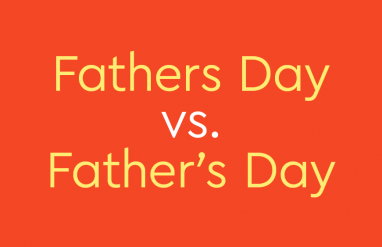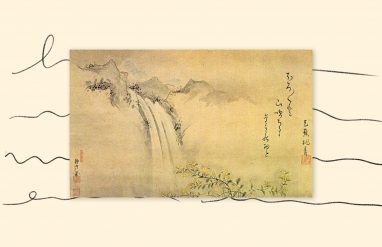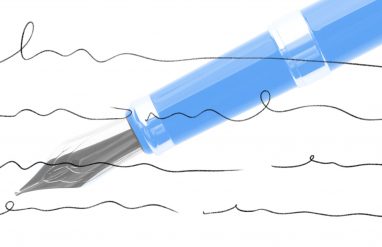The apostrophe is a punctuation mark that is responsible for a few specific jobs. Despite this, the apostrophe is a heavy-hitter in the world of punctuation because the few jobs it has are both very important and very common. So, let’s give credit where credit is due and explore more about how useful apostrophes can be.
What is an apostrophe?
Punctuation is the system of marks, symbols, and characters that we use to make writing more clear and easier to read. An apostrophe is a punctuation mark that is most often used to form possessive nouns, to represent omitted letters, and to form some plurals. An apostrophe resembles a slanted mark or a dot with a tail ( ’ ). Typically, it is identical in appearance to the comma but is placed at the top of a line of text or writing rather than the bottom. This curved apostrophe is known as the typesetter’s apostrophe. Apostrophes can be displayed in a few ways, however. A typewriter’s apostrophe looks like a straight mark (').
✏️Examples of an apostrophe in a sentence
The following sentences show some of the different ways we can use apostrophes:
- Harold’s dog is bigger than Tiffany’s.
- I could’ve taken out the trash, but I didn’t feel like it.
- I can never remember how many s’s there are in Mississippi.
- A lot of millennials have nostalgia for the ’90s.
When do you use an apostrophe?
There are several common reasons why we would use an apostrophe.
Possessive nouns
Apostrophes are needed to create a possessive noun. The specific rules of how to make a noun possessive often vary by style guide or grammar resource. In general, the rules are:
- Singular and plural nouns that don’t end in s: Add an apostrophe followed by the letter s. For example, cat becomes cat’s and people becomes people’s.
- Plural nouns that end in s: Add just an apostrophe. For example, cats becomes cats’.
- Plural nouns treated as a singular: Add just an apostrophe. For example, United States becomes United States’.
- Singular nouns that end in s: Most grammar resources suggest that these nouns simply use ’s like all other singular nouns. For example, Santa Claus becomes Santa Claus’s. However, style guides may disagree and instead end these words with just an apostrophe. If you’d like a more thorough explanation of how apostrophes can be used with these kinds of nouns, we have got you covered.
Omitted letters in contractions
When we omit letters, we substitute in an apostrophe in place of the removed letters. The word that is formed from this substitution is called a contraction. Some common examples of contractions include can’t, hasn’t, didn’t, we’ve, I’ll, you’re, and she’d.
- Written out: We should have turned left.
- Contraction: We should’ve turned left.
Informally, an apostrophe is also used to shorten words when mimicking casual speech. For example,
- I s’pose I could help ’em out. (“I suppose I could help them out.”)
- ’Fraid I don’t know what he is thinkin’. (“I am afraid that I don’t know what he is thinking.”)
This omission rule also applies to decades. For example,
- The movie was popular with adults who were born in the ’70s (1970s).
For more uses of the apostrophe, learn about some uncommon contractions.
Plurals of letters, numerals, and abbreviations
There are few other rare cases where we might use an apostrophe. The following instances often vary by style guide or grammar resource, so it is best to consult the one that you use.
When referring to a single letter as a plural, we sometimes use ’s to make it more clear what we are trying to say. For example,
- Amelie got straight A’s on her report card.
We sometimes do the same thing with numerals:
- Amazingly, Ryan rolled six 10’s in a row.
Usually, plurals of abbreviations don’t use an apostrophe so as not to confuse them with a possessive noun. However, it is possible to use ’s to make an abbreviation plural if it would look awkward with just an s. For example,
- The ship’s radio picked up several S.O.S.’s while sailing the uncharted ocean.
How to use an apostrophe
For the most part, apostrophes are simple to use. When using apostrophes, the main thing to be careful of is using the correct form of a possessive noun and to be careful of the word it’s.
Using possessive nouns correctly
Firstly, make sure to follow the rules of your preferred style guide and stay consistent as you do. Secondly, make sure to use the form of the possessive noun that makes grammatical sense in a sentence. For example,
❌ Incorrect: I have two cats. My cat’s names are Dusk and Twilight. (The word cat’s only refers to a single cat. This sentence is discussing two cats.)
✅ Correct: I have two cats. My cats’ names are Dusk and Twilight.
❌ Incorrect: My sisters birthday is tomorrow. (An apostrophe is missing from this possessive noun.)
✅ Correct: My sister’s birthday is tomorrow.
❌ Incorrect: Monkeys’ climb trees. (This sentence doesn’t need a possessive noun.)
✅ Correct: Monkeys climb trees.
It’s vs. its
The words it’s and its often cause people problems in writing and are a common source of missing or unnecessary apostrophes. Here is the difference:
It’s is a contraction of the phrase it is or it has. It is used in a sentence as in:
- It’s really hot out today. (It is really hot out today.)
Its is a word most often used as a possessive adjective. It is used in a sentence as in:
- The milk was not in its usual spot.
Although rarely used as such, its is also the possessive pronoun form of the word it, just as yours is the possessive pronoun form of you and theirs is the possessive form of they. Just like these words, its doesn’t have an apostrophe.
All of this means that the word it’s is only used as a contraction and is NOT a possessive word. If you want to express that an object or animal possesses something, you don’t need to put an apostrophe in the word its. It’s fine as it is!
Quiz yourself on when to use its vs. it’s.
Punctuate perfectly with Grammar Coach™
Confused about punctuation and its proper use? The Thesaurus.com Grammar Coach™ platform makes writing papers, essays, emails, and a whole lot more a whole lot easier. This writing tool uses machine-learning technology uniquely designed to catch grammar as well as spelling errors. Its Synonym Swap will find the best nouns, adjectives, and more to help say what you really mean, guiding you toward clearer, stronger, writing.















